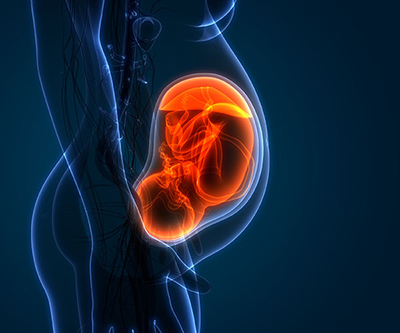
A fetus develops and grows in the womb for nearly 10 months, but the environment in which this occurs can potentially set the stage for a person’s future health. This concept of “fetal programming” is not new, but scientists are still uncovering precisely how this happens.
In a study led by Fasil Tekola Ayele, Ph.D., a Stadtman Investigator in the Epidemiology Branch, researchers explored links between a pregnant woman’s cholesterol profile and the placenta. The study is one of the first to analyze how maternal lipids (i.e., cholesterols and triglycerides) affect placental gene signatures. The team hypothesized a link between the two because research has shown that children born to women with lipid disorders are at higher risk for certain diseases, such as high blood pressure and type 2 diabetes. Because the placenta is the key organ that connects mom to baby and is the site where maternal lipids cross, it likely plays a role in this fetal programming.
The study team found that unhealthy cholesterol levels in the first trimester were significantly associated with placental gene expression changes measured after delivery. These changes occurred in genes relevant to lipid metabolism and inflammation. For example, they found notable expression changes in the gene for lipocalin 2, which helps transport lipids and is considered a candidate cardiovascular disease gene. The work provides a foundation to explore these links in future studies. If the molecular mechanism underlying these connections were mapped, then researchers can identify ways to optimize fetal and lifelong health.
Learn more about the Epidemiology Branch: https://www.nichd.nih.gov/about/org/dir/dph/officebranch/eb
 BACK TO TOP
BACK TO TOP